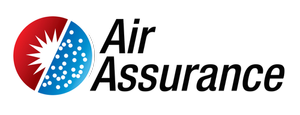If you're like most homeowners, you make upgrades around your house from time to time. If you're concerned about your environmental impact, you'll need to make upgrades that save energy, conserve water, and improve your home's efficiency. Here are some simple eco upgrade ideas that will make your home greener.
Get an Energy Audit
An energy audit helps you identify the home upgrades that will increase your energy efficiency the most. The auditor will carry out a blower door test and thermographic scanning to determine how airtight your home is and where you're losing energy. Making the improvements that the auditor suggests can yield significant energy savings.
Upgrade Your Window Treatments
Did you know that heat and cold air could creep into your home even when your windows are closed? Upgrade your blinds and curtains to better maintain your indoor temperature, prevent your HVAC system from working harder, and make your house more eco-friendly.
Install Attic Insulation
Proper insulation is an excellent way to improve energy efficiency. The attic is the best place to start because a lot of heat loss and gain occur through that part of your house. Loose-fill and batt insulation are good options. Add more insulation if your existing attic insulation is less than R-30 (8 inches of cellulose or 11 inches of rockwool or fiberglass).
Get a Rainwater Barrel
Mother Nature gives you lots of water every year. Put it into good use by harvesting rainwater and then watering your lawn and garden with it. Buy a rainwater barrel and leave it outside when rain has been forecast.
Invest in a Low-Flow Showerhead
The flow rate of showerheads made in 1992 or earlier could be 5.5 gallons per minute. You can reduce your water usage by investing in newer, low-flow models, which can cut down the flow rate to 2.5 gallons or less per minute.
Install a Programmable Thermostat
Make your house more environmentally friendly by using a programmable thermostat to control your heating and cooling system. It helps lower your utility bills.
These eco upgrades help you save money and the planet at the same time. If you want to make HVAC or plumbing upgrades in the Broken Arrow area, contact the award-winning experts at Air Assurance.









